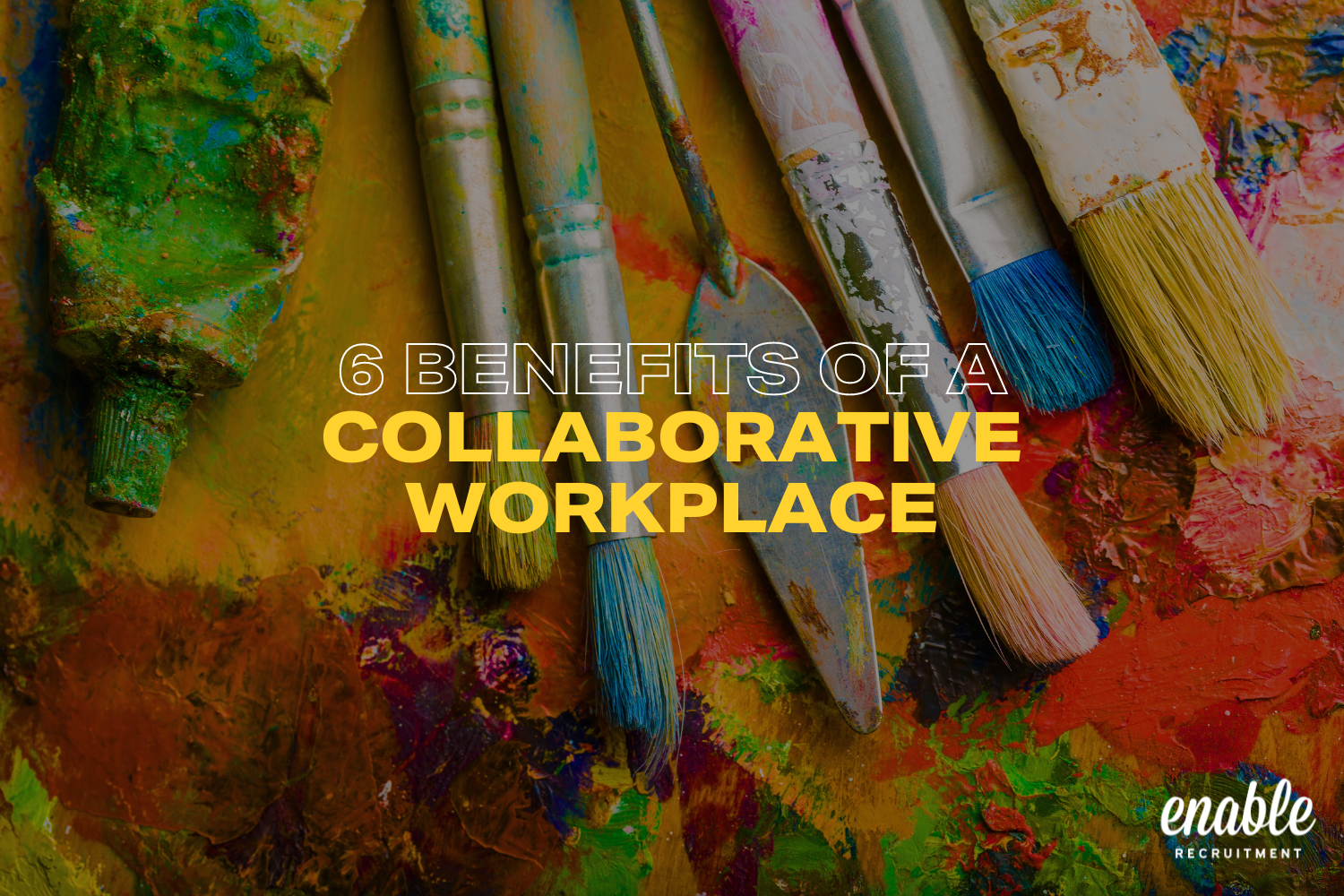6 Benefits of A Collaborative Workplace (And Why Managers Shouldn’t Avoid It)
It's not rare to meet managers who are opposed to collaboration. They have a deep concern for driving productivity and results so they create a regulated environment that will support that.
One of the factors of these environments can be ensuring minimal communication between employees unless they have to.
Makes sense in theory, right? If employees spend less time talking to their colleagues, they'll spend more time in focus, completing the tasks they need to complete. But what if that environment isn't helping them as much as you think? Did you know that companies who promoted collaborative working were 5 times as likely to be high-performing? (Forbes)
If you're a manager who fears that allowing free-flowing collaboration will decrease performance in your team, it may simply be down to the fact that you don't know the benefits.
Here are 6 benefits of collaborative working that should convince you.
1. Increased Productivity
Quiet offices are usually viewed as the productive ones. But sometimes quiet employees could also be struggling employees who would be able to work better if they collaborated. When teams collaborate effectively, tasks can be completed more efficiently, reducing time and unnecessary struggle.
Collaborative employees are more productive because they can:
Delegate work
Ask for help
Receive on-the-job mentorship
2. Enhanced Innovation
If you want your organisation to thrive, creativity and innovation should be a top priority... something that can't be achieved with employees who don't speak to each other.
Innovation stems from diverse perspectives and ideas. Your employees need one another when brainstorming to come up with ideas that may not have been possible individually.
3. Improved Problem-Solving
Every employee should be able to take initiative in situations that require critical, quick-thinking skills. But does that mean you should deny them support if the support is there?
As a manager, you've got a range of employees with a range of valuable skills, perspectives and experiences. Why would you hire a range of people to not use that to your employee's advantage when they are deciding on something? Collaborative problem-solving uses the strengths and expertise of each person meaning employees can identify issues more effectively and develop great solutions.
4. Employee Engagement and Satisfaction
This one should be obvious. Employees are, on average, 17% more satisfied with their job when they collaborate (Zippia)
This is because working together fosters a sense of belonging and teamwork, making employees more satisfied and turnover lower. Not to mention it's just a nicer environment when people are collaborative. Company culture is hard to create when communication is at a minimum, but this is something that 88% of employees value (TeamStage).
5. Skill Development
What better way for employees to learn than to allow them to learn from one another?
A collaborative culture is a learning culture where employees don't just feel like they can ask each other for help and guidance, but that they willingly want to offer it too.
6. Stronger EMPLOYEE Trust
If you want a team that:
Embodies teamworking
Cares about one another
Trusts one another
Isn't selfish
A collaborative environment will create that. By working closely together, employees develop a deeper understanding and appreciation for each other's contributions, realising they need mutual support to progress.
- Written by Oliver Howson
NEED SOME FRIENDLY ADVICE OR MORE TIPS?
If you are looking for more advice or help finding your next job, we can help, please give us a call on: 0117 301 8495 or take a look at our jobs page. Alternatively, if you’re an employer in the UK looking to recruit and need someone with real recruiting expertise then we can help – let’s chat.













